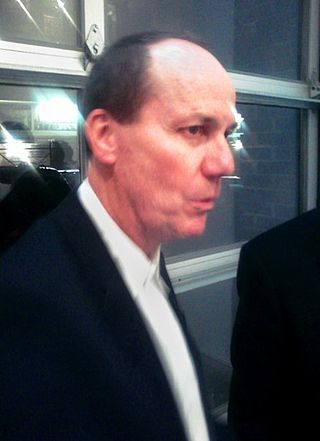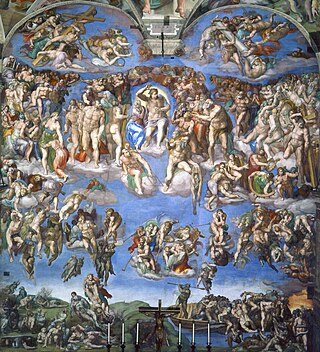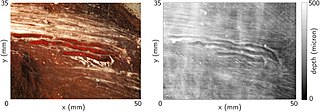
The Sistine Chapel is a chapel in the Apostolic Palace, the pope's official residence in Vatican City. Originally known as the Cappella Magna, the chapel takes its name from Pope Sixtus IV, who had it built between 1473 and 1481. Since that time, the chapel has served as a place of both religious and functionary papal activity. Today, it is the site of the papal conclave, the process by which a new pope is selected. The fame of the Sistine Chapel lies mainly in the frescoes that decorate the interior, most particularly the Sistine Chapel ceiling and The Last Judgment, both by Michelangelo.

Helen Frankenthaler was an American abstract expressionist painter. She was a major contributor to the history of postwar American painting. Having exhibited her work for over six decades, she spanned several generations of abstract painters while continuing to produce vital and ever-changing new work. Frankenthaler began exhibiting her large-scale abstract expressionist paintings in contemporary museums and galleries in the early 1950s. She was included in the 1964 Post-Painterly Abstraction exhibition curated by Clement Greenberg that introduced a newer generation of abstract painting that came to be known as color field. Born in Manhattan, she was influenced by Greenberg, Hans Hofmann, and Jackson Pollock's paintings. Her work has been the subject of several retrospective exhibitions, including a 1989 retrospective at the Museum of Modern Art in New York City, and been exhibited worldwide since the 1950s. In 2001, she was awarded the National Medal of Arts.

Milton Ernest "Robert" Rauschenberg was an American painter and graphic artist whose early works anticipated the Pop art movement. Rauschenberg is well known for his Combines (1954–1964), a group of artworks which incorporated everyday objects as art materials and which blurred the distinctions between painting and sculpture. Rauschenberg was primarily a painter and a sculptor, but he also worked with photography, printmaking, papermaking and performance.

Renaissance art is the painting, sculpture, and decorative arts of the period of European history known as the Renaissance, which emerged as a distinct style in Italy in about AD 1400, in parallel with developments which occurred in philosophy, literature, music, science, and technology. Renaissance art took as its foundation the art of Classical antiquity, perceived as the noblest of ancient traditions, but transformed that tradition by absorbing recent developments in the art of Northern Europe and by applying contemporary scientific knowledge. Along with Renaissance humanist philosophy, it spread throughout Europe, affecting both artists and their patrons with the development of new techniques and new artistic sensibilities. For art historians, Renaissance art marks the transition of Europe from the medieval period to the Early Modern age.

Richard Prince is an American painter and photographer. In the mid-1970s, Prince made drawings and painterly collages that he has since disowned. His image, Untitled (Cowboy), a photographic reproduction of a photograph by Sam Abell and appropriated from a cigarette advertisement, was the first rephotograph to be sold for more than $1 million at auction at Christie's New York in 2005. He is regarded as "one of the most revered artists of his generation" according to The New York Times.

The Sistine Chapel ceiling, painted in fresco by Michelangelo between 1508 and 1512, is a cornerstone work of High Renaissance art.

Pinturicchio, or Pintoricchio, also known as Benetto di Biagio or Sordicchio, was an Italian painter during the Renaissance. He acquired his nickname because of his small stature and he used it to sign some of his artworks that were created during the fifteenth and sixteenth centuries.
Edward Joseph Ruscha IV is an American artist associated with the pop art movement. He has worked in the media of painting, printmaking, drawing, photography, and film. He is also noted for creating several artist's books. Ruscha lives and works in Culver City, California.

The Gagosian Gallery is a contemporary art gallery owned and directed by Larry Gagosian. The gallery exhibits some of the most influential artists of the 20th and 21st centuries. There are 18 gallery spaces – six in New York City, two in London, three in Paris, and one each in Basel, Gstaad, Beverly Hills, Rome, Athens, Geneva and Hong Kong.

The Last Judgment is a fresco by the Italian Renaissance painter Michelangelo covering the whole altar wall of the Sistine Chapel in Vatican City. It is a depiction of the Second Coming of Christ and the final and eternal judgment by God of all humanity. The dead rise and descend to their fates, as judged by Christ who is surrounded by prominent saints. Altogether there are over 300 figures, with nearly all the males and angels originally shown as nudes; many were later partly covered up by painted draperies, of which some remain after recent cleaning and restoration.

The conservation-restoration of the frescoes of the Sistine Chapel was one of the most significant conservation-restorations of the 20th century.
Rudolf Stingel is an artist based in New York City.
Joe Bradley is an American visual artist, known for his minimalist and color field paintings. He is also the former lead singer of the punk band Cheeseburger. Bradley has been based in New York City and Amagansett.

The Madonna del Prato, formally Madonna with the Christ Child and Saint John the Baptist, is an oil on board painting by Raphael, created in 1506, now held in the Kunsthistorisches Museum in Vienna. It is also known as the Madonna del Belvedere after its long residence in the imperial collection in the Vienna Belvedere.
Adriana Varejão is a Brazilian artist. She works in various disciplines including painting, drawing, sculpture, installation and photography. She was an artist-in-resident at the Isabella Stewart Gardner Museum in 2004. Varejão lives and works in Rio de Janeiro.
Y.Z. Kami is an Iranian-American artist based in New York City.
José García Guerrero, better known as José Guerrero, was a Spanish artist, notable for his abstract expressionist paintings, who spent much of his working life in U.S.A.
Action Painting II is a 1984 painting by Mark Tansey, now in the Jean-Noël Desmarais pavilion, the contemporary art section of the Montreal Museum of Fine Arts, to which it was donated by Nahum Gelber.
Gianluigi Colalucci was an Italian Master Restorer and academic most known for being the chief restorer of the Sistine Chapel in the Vatican City from 1980 to 1994.

In visual arts, the ground is a prepared surface that covers the support of the picture and underlies the actual painting. Occasionally the term is also used in a broad sense to designate any surface used for painting, for example, paper for watercolor or plaster for fresco.











